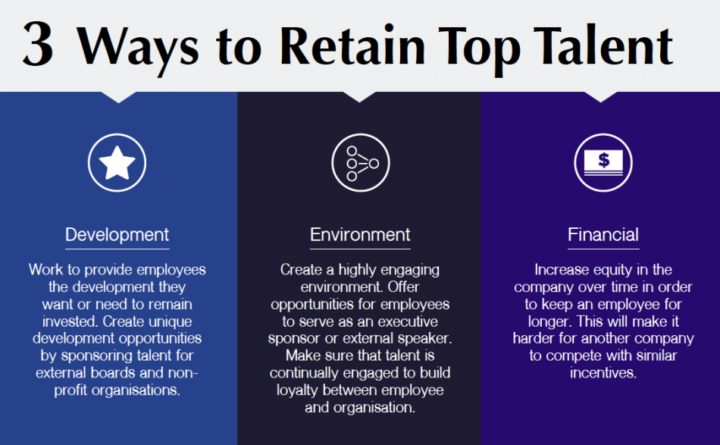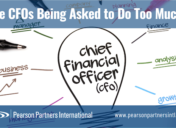Building a Talent Acquisition Brand
 Pearson Partners is part of IIC Partners, a top 10 global executive search organization. In this study, our partners explore the role of talent acquisition departments in enhancing, leveraging and structuring human capital strategy.
Pearson Partners is part of IIC Partners, a top 10 global executive search organization. In this study, our partners explore the role of talent acquisition departments in enhancing, leveraging and structuring human capital strategy.
IIC Partners Executive Search Worldwide interviewed Michael Cox, Senior Vice President of Talent Acquisition at Comcast, to gather insight on the role of talent acquisition departments and how they collaborate with executive search firms.
The IIC Partners human resources practice group also shared the talent acquisition trends they are seeing from clients.
A recent trend seen by executive search consultants has been the increase in mandates from their clients to recruit talent acquisition executives to join their team. The increase in demand to fill these types of roles is a direct reflection of organizations getting serious about winning the war for talent, retaining their best employees and securing the best and brightest to join their ranks.
Sally Stetson, Co-Founder and Principal of Salveson Stetson Group, an executive search firm located in Philadelphia, has seen her clients react to this shift. “Companies are expanding their recruitment functions to meet demand. More employees are accepting external promotions and this creates more internal openings. We have had multiple requests to manage assignments from clients who are looking to recruit a head of talent acquisition,” Stetson commented.
The Talent Acquisition Executive’s Role
The head of talent for an organization knows when to leverage and involve executive search firms, key stakeholders and other departments when planning hiring activities. The head of talent serves as a strategic advisor on the overall leadership management strategy of an organization, works as an employment brand ambassador and manages internal succession planning solutions and the talent pipeline.
A successful head of talent has an intimate and comprehensive understanding of all business units in a company and utilizes this strong business acumen to ensure that human capital needs are aligned with leadership demands of the future.
Basic metrics such as “time-to-fill” and “cost-per-hire” are seen as measures of the past. Today’s leading talent acquisition functions have moved beyond these hygiene factor metrics to more substantive metrics that measure quality, engagement and efficiency of the search process. Michael Cox discussed the metrics he uses when analyzing talent within his organization: “My goal is to utilize metrics that measure talent in terms of quality and density in the organization and to have the foresight, experience and business knowledge to balance the hiring and movement of talent,” said Cox. “For example, my goal is to hire 150 of the best engineers in the market rather than 200 average engineers. This higher concentration or density of high-caliber talent will yield more output all by placing a higher focus on quality of hire. I also look for predictive metrics and analytics to determine future talent demands.” Companies are looking for talent acquisition leaders who possess these consultative and advisory skills to effectively manage talent gaps and needs within an organization.
As economies grow and businesses prosper, a direct correlation can be made with the expansion of talent acquisition departments. This proportional growth is seen in countries such as Ireland. Ruth Curran, Managing Partner of MERC Partners in Dublin and Global Chair of IIC Partners, noticed this rise in demand for talent acquisition professionals. “Unemployment rates in Ireland fell to a 6% low in April [2016]. This has unlocked further investment across industry sectors, and with that, the need for talent and talent acquisition teams. This is especially prevalent in U.S. multinational corporations and in EMEA headquarter functions in Ireland,” Curran said.
Barbara Stahley, Managing Director of Chadick Ellig in New York, has seen clients begin to understand the critical role of talent acquisition departments when it comes to effectively implementing a talent management strategy. “Clients are focused on linking talent acquisition directly to the full talent lifecycle at the company, as well as leveraging the function as part of a broader organizational transformation. As our clients re-evaluate their approach to identifying, attracting, onboarding and retaining talent, they understand that a successful strategy begins with talent acquisition,” Stahley said.
In certain industries, functions and markets, the supply of talent is scarce and cannot meet growing demand. This has created a competitive environment for finding and retaining the right employees. If talent is a company’s most important asset, then attracting and retaining leaders should be a critical imperative for the business. The evolution of technology and social media is changing the way companies source and hire employees. According to Michael Cox at Comcast, “Everyone is searching for the same talent in the same places, which inundates potential candidates with requests,” Cox said.
A great talent acquisition professional is a strategic asset for the organization. They serve as an ambassador to top talent in the market by building and sustaining relationships with individuals.
“The attraction and acquisition of hard-to-find top talent is cultivated through relationships over time both by the employer at the brand level and by the talent professional. Identifying the individual is only the start of the battle. The other challenge talent acquisition professionals face is to convince the candidate to make the move and that their organization should be a career destination,” Cox added.
In addition to uncovering and recruiting hidden talent, talent acquisition departments must also serve as an employee brand ambassador. Nairouz Bader, CEO of Envision Partnership in Dubai, says, “The role of talent acquisition in an organization has become a combination of recruitment, understanding talent trends to build a proactive strategy and getting increasingly involved in employer branding activities.”
Talent acquisition departments play a very active role in articulating the employment brand of a company and selling the organization’s reputation as a career destination.
A positive depiction of an employment brand will place a company ahead of its hiring competitors. “There is growing evidence that supports the desire for the candidate experience to be improved by an organization’s talent acquisition team, and employer branding is playing more of a role in attracting talent more quickly. We are now hearing the term employer value proposition more frequently in the corridors of large corporations,” Ruth Curran said.
Talent acquisition departments convey employer branding messages in two ways. The first is establishing and utilizing incentives to attract top talent to an organization, resulting in the hiring of a new executive. The second is leveraging the newly hired executive’s influence and profile to enhance a company’s employment brand identity and attract even more top talent.
When an executive leaves a position or organization for an external opportunity, it is the responsibility of the talent acquisition department to assess the departure. Understanding the motivations behind the executive’s decision to leave can provide insight to minimize future risk. During this investigation, data can be collected and analyzed to predict other departure trends and identify gaps in leadership succession.
Internal mobility has become a frequently used phrase within talent acquisition departments. Organizations are keen to onboard individuals who will perform well in their job function but also potentially perform well in a variety of roles across the organization. Companies are looking to promote from within more often and vertically progress employees within the organization.
“We are seeing more emphasis placed on internal succession planning by talent acquisition departments. More needs to be done in retaining talent in an organization that goes beyond the traditional tools at HR’s disposal,” Curran said. “Organizations need to do more in understanding the strata of employees in their organization, their motivations and what values they hold as their career path evolves.”
When developing a succession plan for a position, the prospective role and candidate must have a clearly defined career roadmap. Cox notes this as a large challenge for many talent acquisitions departments. “The challenges we face in securing talent for today’s workforce are two-fold: succession planning for existing talent and engaging and competing for external talent in a hyper-competitive labor market. When we identify potential successors through well-developed talent management processes, it is imperative we think about the needs of the role for the future as an organization grows and evolves. In addition to considering the organization’s needs, we also have to consider the selected individual’s future and anticipate their subsequent moves to optimize their career and the company’s return on investment in talent,” Cox said.
Executive search firms are retained to execute higher-level mandates for more senior leadership roles, and to identify external talent for succession planning. Mirko Petrelli, a partner with Stones International in Hong Kong, has seen this trend across Asia Pacific with his clients and the relationship that has arisen between internal talent acquisition departments and executive search. “Talent acquisition teams are, in fact, replacing the success-based recruiter and managing the entire hiring process. Retained executive search consultants are still perceived as trusted advisors who can deliver value and manage the high-level searches in a more effective way compared to talent acquisition departments,” Petrelli said.
Talent acquisition departments leverage executive search firms to provide support for senior-level appointments. In addition, many executive search firms assist talent acquisition departments by offering additional services beyond traditional recruiting, such as leadership assessment, talent mapping, board placement and succession planning to strengthen the overall talent management and leadership strategy of an organization.

IIC Partners Global Human Resources Practice Group
The IIC Partners global human resources practice group is a seasoned team of executive search consultants with unparalleled industry knowledge and expertise in identifying the best senior executive human resources talent. Human resources executives must possess the technical qualifications, right leadership style and serve as a trusted advisor to the senior leadership team. The IIC Partners global human resources practice group has unrivaled access to passive talent markets in over 36 countries and regularly collaborates to deliver the right candidate to the client. Pearson Partners Vice President Lisa Thompson, LPC, PCC, is a contributing member of the practice group.
IIC Partners HR Practice Group Members

Dots are our global IIC Partners offices, with the HR practice group specialists highlighted in orange.
Sally Stetson (Practice Group Leader), Co-Founder & Principal, Salveson Stetson, Philadelphia
Nairouz Bader, CEO, Envision Partnership, Dubai
Susan Chadick, Co-CEO, Chadick Ellig, New York
Ruth Curran, Managing Partner, MERC Partners, Dublin
Anne McCall, Associate Partner, CurzanTrinitas, London
Mirko Petrelli, Partner, Stones International, Hong Kong
Barbara Stahley, Managing Director, Chadick Ellig, New York
Sally Talbot, Human Resources Practice Leader, Per Ardua, London
Lisa Thompson, LPC, PCC, Vice President, Pearson Partners International, Dallas














